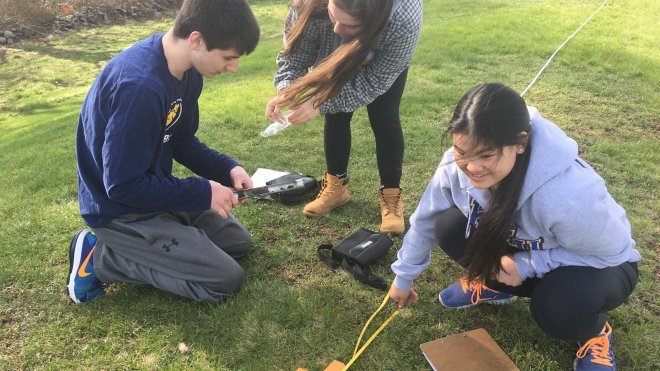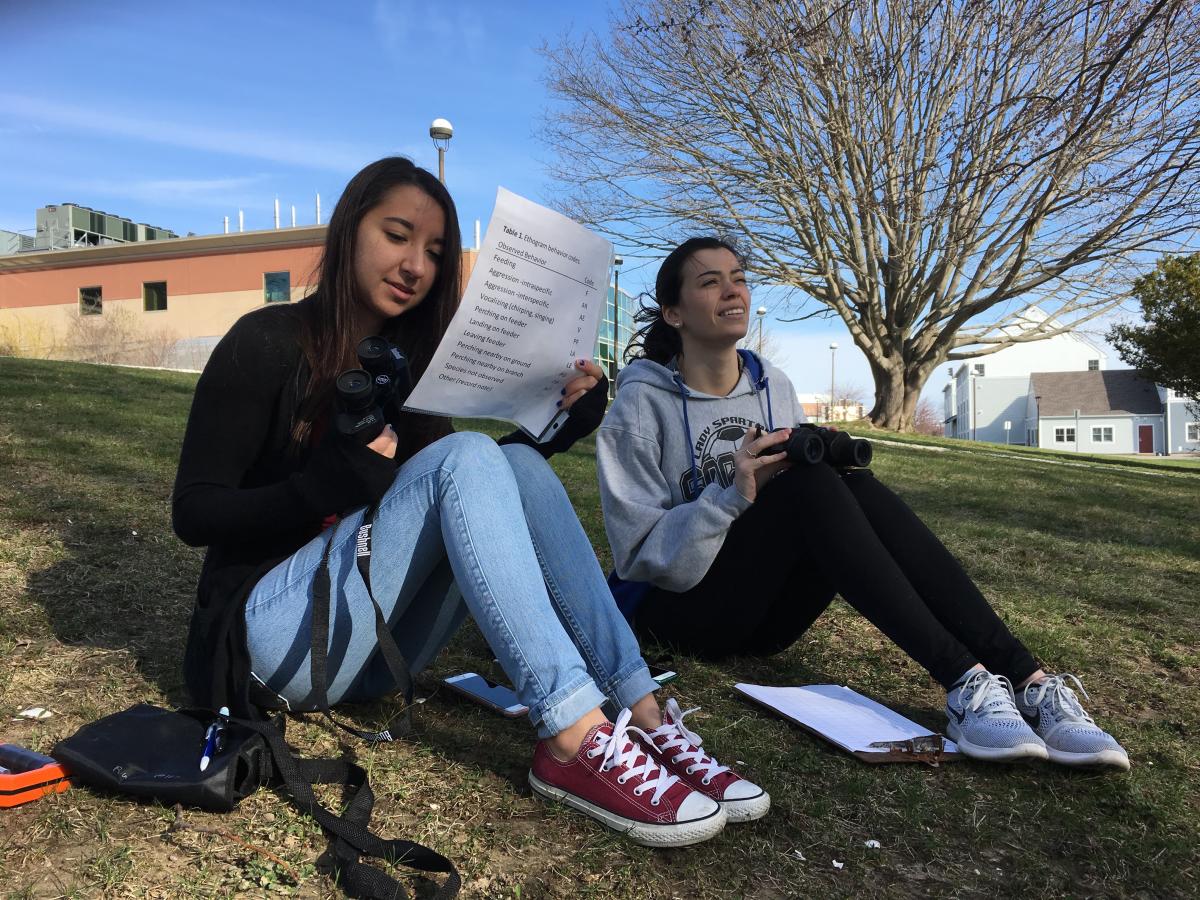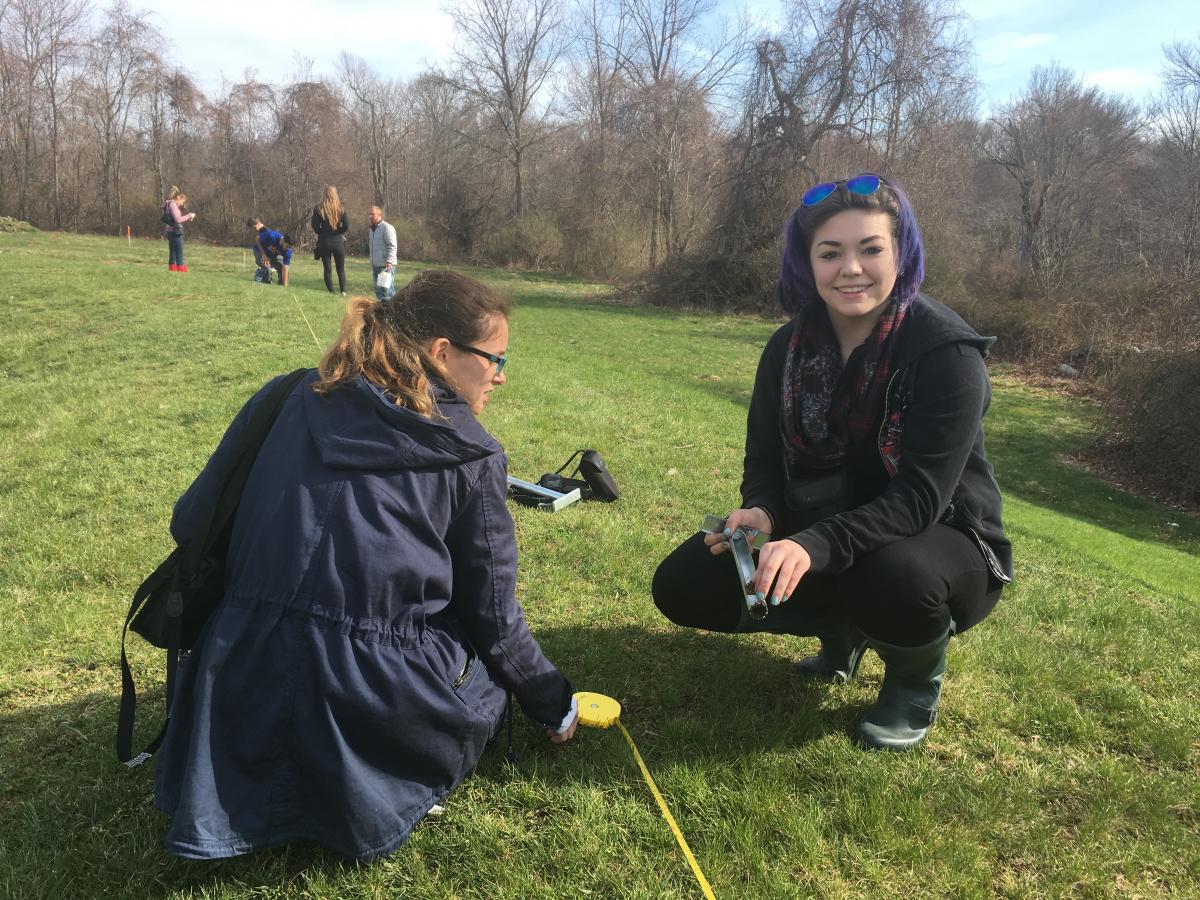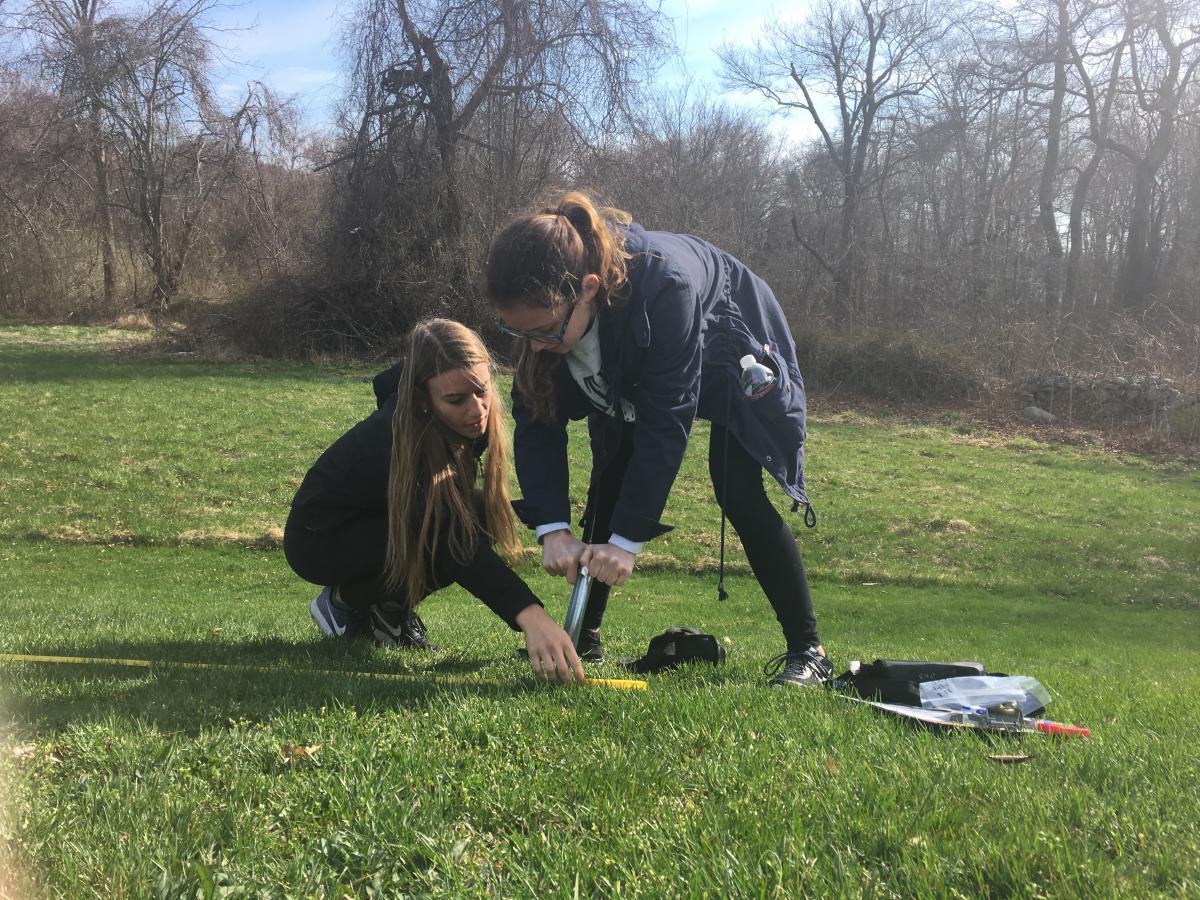Training Scientific Thinkers from Year One
Foundational biology course brings students out into the field to conduct hands-on science

BRISTOL, R.I. – In the fields behind the Bayside Residences, budding scientists have been scouring the landscape with notepads and pens in hand, jotting down observations and then collecting samples. At Roger Williams University, students in the foundational biology course learn the fundamentals in the classroom and then take their science out into the field.
Part of the science program’s philosophy of developing the scientific mind early on, all students in this semester’s Biology I courses were getting their hands dirty with field work. From identifying species and observing animal behavior, to taking soil samples to be tested in the lab, the students’ work will be compiled into a database from which all of the classes can look for patterns and draw conclusions based on their own collective research.
“We emphasize going out to collect data and conduct real field science in the first year,” says Loren Byrne, associate professor of biology and environmental science at RWU. “We’re training them to be scientific thinkers right away to give them a foundation to deepen their skills as scientists as they progress throughout the program.”
Follow one class below as they tackle their first assignment in the field.

Briana Cooper and Devin Pietz scan the tree line for a variety of bird species near the Richard L. Bready Sailing and Education Center. In just a few minutes, they recorded sightings of house finch and tufted titmouse landing on a bird feeder.

Spotting several red-winged blackbirds, Nina Bakker (left) and Nicole Manocchio note the birds’ behavior in their research logs. Bakker said they document whether a bird perches on the ground or on a branch. Or, Manocchio added, is the bird feeding, chirping or acting aggressively with other birds?

Dahlia Osorio (left) and Chloe Pearson collect a soil sample as teams ahead measure out locations to take specimens from a variety of locations and gradients. Professor Byrne explained to the students that scientific fieldwork needs to take into account geographical and physical variations, as the teams gathered samples they will compare with those of other classes who collected from the same areas but at various times of day and weather conditions.

Gianna Grande (left) marks the spot in the field as Dahlia Osorio (right) cuts a core sample from the earth . Their scientist’s toolkit to the right includes a collection bag they mark with each location – an important method to learn now, Professor Byrne advised, in order to conduct effective fieldwork.

Part of the fieldwork included trapping and identifying insect species. Kathryn Blask and Jack Rooney (foreground) record the bugs they find as Scott MacDonald and Annalisa Baci (background) inspect the contents of another trap.